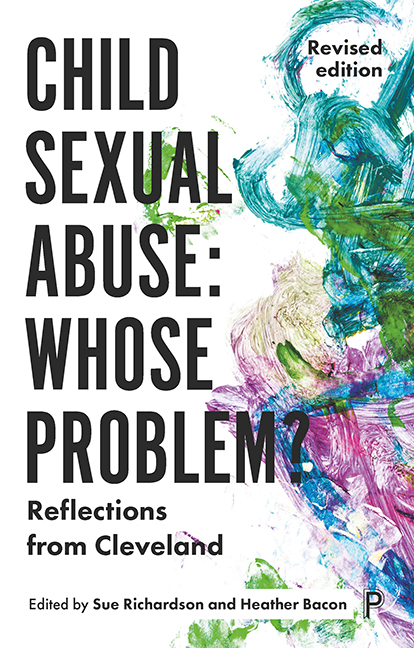Book contents
- Frontmatter
- Dedication
- Contents
- List of tables and figures
- List of abbreviations
- Notes on the editors and contributors
- Acknowledgements
- Preface
- Introduction:Why Cleveland still matters: connections with a new era
- one From Colwell to Cleveland: 1973 to 1988
- two A framework of belief
- three The medical diagnosis of child sexual abuse: the paediatrician’s dilemma
- four After the medical diagnosis: everyone’s dilemma
- five The continuum of disclosure
- six Seen but not heard: the children of Cleveland
- seven The unwanted message: child protection through community awareness
- eight Questions not answers: progressing the debate
- Conclusion:Thirty years later: how far have we progressed?
- Appendix
- References
- Index
five - The continuum of disclosure
Published online by Cambridge University Press: 13 April 2022
- Frontmatter
- Dedication
- Contents
- List of tables and figures
- List of abbreviations
- Notes on the editors and contributors
- Acknowledgements
- Preface
- Introduction:Why Cleveland still matters: connections with a new era
- one From Colwell to Cleveland: 1973 to 1988
- two A framework of belief
- three The medical diagnosis of child sexual abuse: the paediatrician’s dilemma
- four After the medical diagnosis: everyone’s dilemma
- five The continuum of disclosure
- six Seen but not heard: the children of Cleveland
- seven The unwanted message: child protection through community awareness
- eight Questions not answers: progressing the debate
- Conclusion:Thirty years later: how far have we progressed?
- Appendix
- References
- Index
Summary
Editors’ summary
This chapter introduces the concept of the continuum of disclosure, which describes the path that child victims have to travel before they are able to disclose their abuse. Some factors help them to progress along the path, such as their own maturity, the availability of an advocate, and feeling they are safe; while other factors impede them, for example immaturity, loyalty to the abuser, threats and pressure to remain silent, accommodation to abuse over a long period, and dissociation. Removal from home might move a child in either direction, depending on the circumstances. Abused children are seen as falling into three groups: a minority who disclose readily, those who require facilitation over a period of time before they can disclose, and those who remain unable to disclose.
An unacknowledged trauma is like a wound that never heals over and may start to bleed again at any time. In a supportive environment the wound can become visible and finally heal completely. (Miller, 1985, p. 184)
Introduction
This chapter provides a framework within which to address the task of intervention. Its perspective is that the abused child's developmental level crucially influences the process of disclosure. Increased awareness of alerting signs and symptoms, together with developments in the medical diagnosis, may prompt investigation in a wide range of children, not all of whom will have made a disclosure or allegation. A sophisticated and flexible framework is needed to respond effectively to the diversity and apparent contradictions in children's reactions to what may appear from an adult standpoint to be the same situation. An additional complication is that the evaluation will often take place in an adversarial context.
Medical findings suggestive of anal penetration may be the starting point of investigation for several children. In one case there may be a vigorous denial by both the young child and possible perpetrator. A vigorous assertion that the medical findings are erroneous can lead to the explanation that the investigation produced a ‘false positive’. In another, a child (again young) who spontaneously gives a recognizable account of anal penetration may be seen as confirming the precisely similar medical findings. An older child may make a hesitant statement of an activity which does not tally with the medical findings and then ‘confess’ to having lied.
- Type
- Chapter
- Information
- Child Sexual Abuse: Whose Problem?Reflections from Cleveland (Revised edition), pp. 119 - 136Publisher: Bristol University PressPrint publication year: 2018



